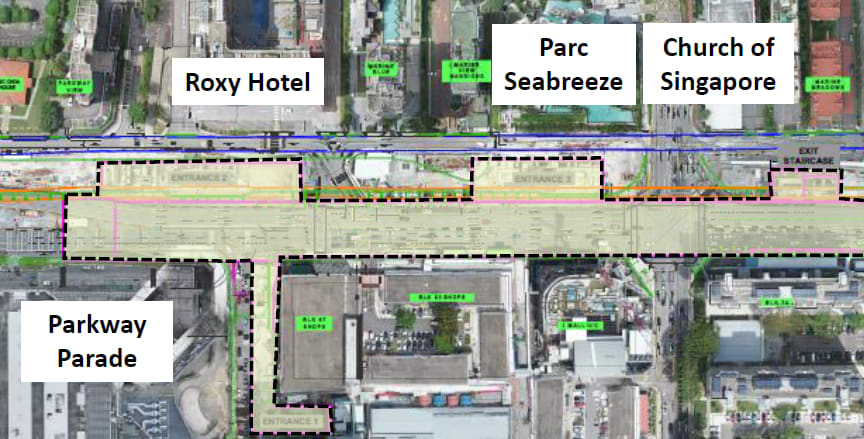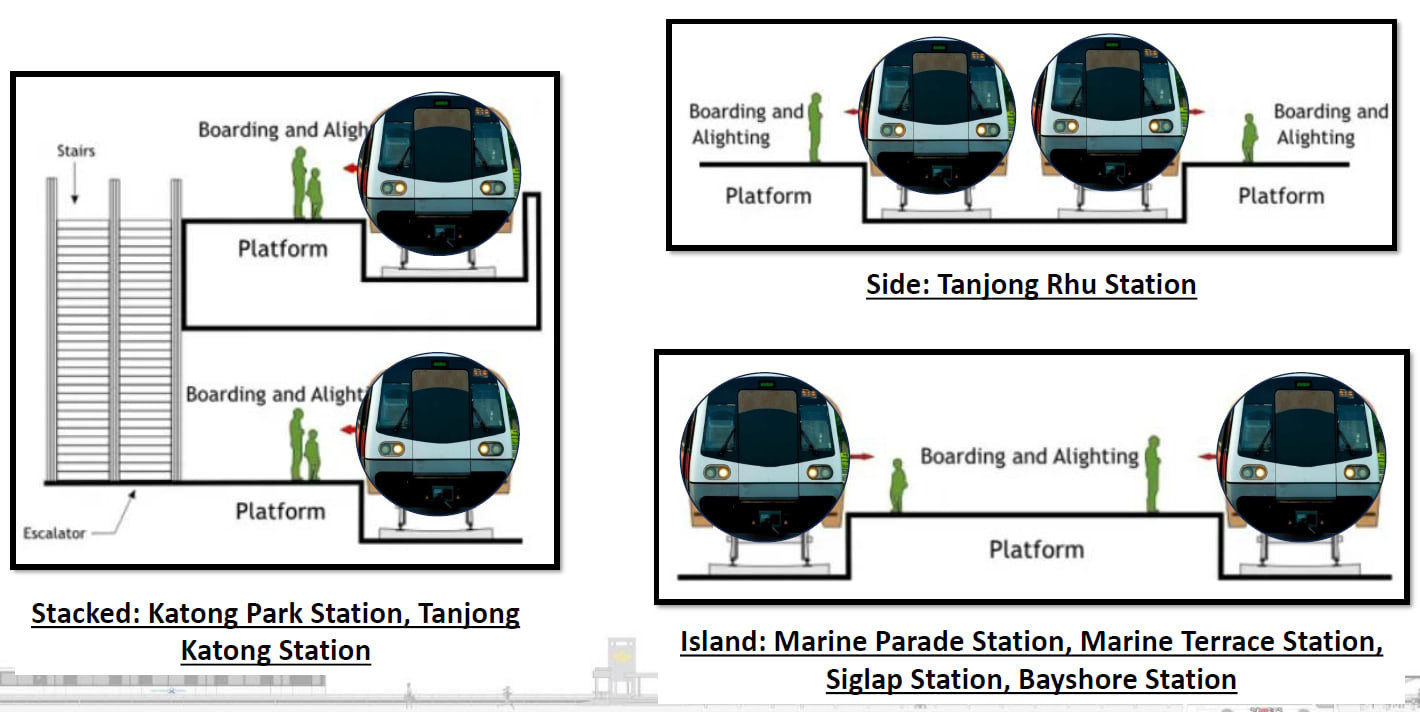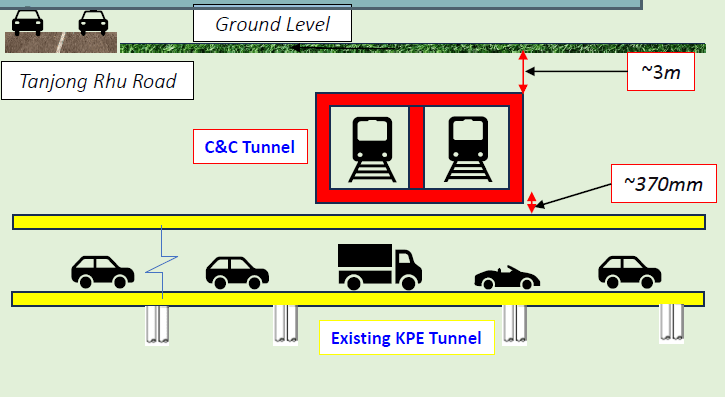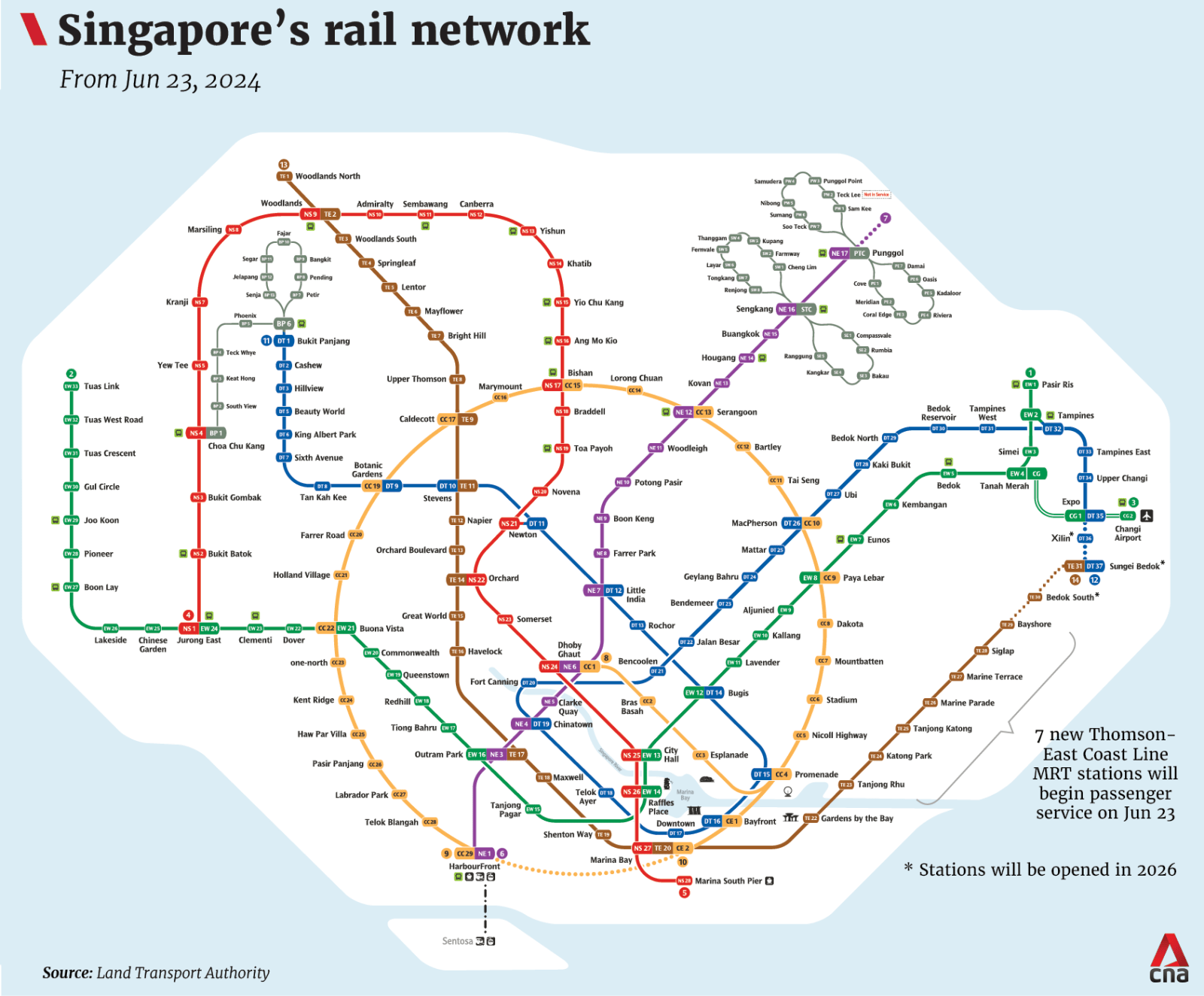Tunnelling through crowded areas, how engineers navigated constraints to build 7 new Thomson-East Coast Line stations
Stage 4 of the Thomson-East Coast Line (TEL4), which will serve serving residents in areas such as Tanjong Rhu, Marine Parade and Siglap, was built through several mature estates that never had rail connectivity.

Marine Parade MRT station on the Thomson-East Coast Line. (Photo: Land Transport Authority)

This audio is generated by an AI tool.
SINGAPORE: After years of construction, Stage 4 of the Thomson-East Coast Line (TEL4) will soon be in operation, serving residents in areas such as Tanjong Rhu, Marine Parade, Siglap and Bayshore.
It's an engineering feat, as the line was built through several mature estates in the East Coast area that never had rail connectivity.
The soil composition was an issue in an area not far from where land was reclaimed. Plus - the MRT tunnels are very close to the existing Kallang-Paya Lebar Expressway (KPE).
These factors made construction particularly challenging, said the Land Transport Authority (LTA) as its engineers provided some insight on Monday (May 20) into what it took to make TEL4 a reality.
The seven stations - Tanjong Rhu, Katong Park, Tanjong Katong, Marine Parade, Marine Terrace, Siglap and Bayshore - will begin passenger service on Jun 23.
As the MRT tunnels are close to many malls, HDB blocks, condominiums and private properties, diversions for roads and utilities such as electric cables were a common occurrence.
Some of these diversions required LTA to conduct impact studies and reach out to stakeholders in the area as early as one year in advance.
“Given the density of the built-up area, careful and detailed planning of the station and tunnels alignment was essential to ensure that we were able to build the stations and tunnels with minimal inconvenience to the surrounding stakeholders," said LTA senior project engineer Lee Yang.
The construction of Marine Parade station was one example. It is close to Parkway Parade shopping mall, a hotel, HDB estates, health facilities and several landed housing estates.
Therefore, there had to be an extensive relocation of existing utilities such as power cables, telecom cables and water pipes in order for the station to be built, said LTA senior project engineer Chantal Lee.
“At the same time, we had to ensure that the (utilities) still continue serving the establishment while the works are being carried out,” she added.
Usually, the process of diverting utilities requires a single-lane road closure, but as Marine Parade was too busy and the surrounding areas too built up, it was not safe to do this.
So, in 2017, a section of Joo Chiat Road was closed for about seven months to facilitate the moving of utilities.
This was done after a detailed traffic impact assessment, including adjustments to public bus services.

PLATFORM CONFIGURATION
Another challenge that engineers faced was reducing the “footprint”, or the land occupied by the station’s buildings and structures, to avoid possible encroachment into private land.
For example, at Katong Park and Tanjong Katong stations, the construction area was limited as it is surrounded by private land and properties such as condominiums.
As such, the engineers adopted a “stacked” platform configuration for both stations, where two or more platforms are built one on top of the other rather than on the same level as with most stations in Singapore.
“We adopted the stacked platform configuration which reduces overall station footprint, deepens the station and also avoids land acquisition,” said Mr Lee, the LTA engineer.
Tanjong Rhu station, on the other hand, has a “side” platform configuration, where two platforms are located on either side of the tracks, with one platform serving trains travelling in one direction and the other platform serving trains in the other direction.
This is to avoid having tunnels running underneath condominiums.
Engineers therefore had to avoid the “island” platform configuration - the most common at Singapore MRT stations where a single platform is located between the tracks, serving trains travelling in both directions.
The island platform configuration is used for the other four stations on the TEL 4 - Marine Parade, Marine Terrace, Siglap and Bayshore.

The soil composition was another factor to consider.
As the TEL4 stations run along the east coast, they are situated where the old coastline of Singapore used to be before land was reclaimed further south.
Thus, the land comprises marine clay which is soft and sand which is loose, which would pose “huge challenges” for the team during the construction phase if it was left untreated, said Mr Lee.
Tunnel engineers managed the challenges by using specially modified tunnel boring machines to either pump the soft clay or to choke the loose sand so that there is control of the ground as the tunnelling proceeded.
In areas with very soft ground, extensive ground improvement works had to be carried out before excavation works, by pumping cement into the ground to strengthen the soil, said Mr Lee.
“With this ground improvement works, underground stations can then be constructed safely without any adverse impact on the surrounding buildings,” he added.
Existing stations which were also built on land with similar marine clay and sand composition are the Gardens by the Bay station on the Thomson-East Coast Line, as well last the Bayfront interchange station on the Circle and Downtown Line.
JUST 37CM AWAY FROM A MAJOR HIGHWAY
At Tanjong Rhu station, engineers had to bear in mind the proximity to the existing Kallang-Paya Lebar Expressway (KPE) tunnel.
The MRT tunnel was just 37cm above the KPE tunnel, and 3m below the existing ground level.

To mitigate any impact on the surroundings, a “cut and cover” method had to be adopted in constructing that section of tunnel, instead of using a tunnel boring machine, Mr Lee said.
A cut-and-cover method involves digging a trench, constructing the tunnel, and then returning the surface to its original state.
Mr Lee said that the construction process was monitored frequently to ensure its impact on surrounding buildings was well controlled.
LTA previously said that with the seven new stations, commuters can expect travel time savings of up to 50 per cent on TEL.
Around 235,000 households will be within a 10-minute walk from an existing TEL station, from Woodlands North to Bayshore.















